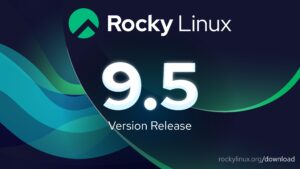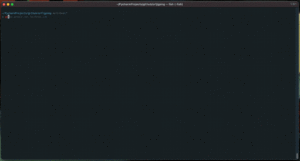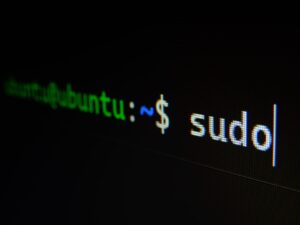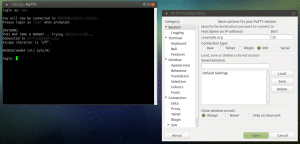In an increasingly interconnected world, web applications have become the backbone of online services. However, this ubiquity also makes them prime targets for cyberattacks. Ensuring their security is not optional—it is a necessity. Linux, known for its robustness and flexibility, serves as an ideal platform for deploying secure web applications. Yet, even the most secure environments require tools and strategies to defend against vulnerabilities.
Among the most effective tools for this purpose are OWASP ZAP and ModSecurity. These solutions work together to identify and mitigate vulnerabilities in web applications. While OWASP ZAP functions as a vulnerability scanner and penetration testing tool, ModSecurity acts as a web application firewall (WAF), blocking malicious requests in real time.
Major Threats to Web Applications
Web applications face various security challenges, from SQL injection to cross-site scripting (XSS). The OWASP Top 10 identifies the most critical risks that could lead to data breaches, service interruptions, and other severe issues. Key threats include:
- SQL Injection: Manipulating backend databases through malicious queries.
- Cross-Site Scripting (XSS): Injecting malicious scripts into web pages for other users to execute.
- Broken Authentication: Flaws in session management that enable unauthorized access.
Proactively identifying and mitigating these vulnerabilities is essential, and this is where OWASP ZAP and ModSecurity shine.
OWASP ZAP: A Comprehensive Vulnerability Scanner
What is OWASP ZAP?
The Zed Attack Proxy (ZAP) is an open-source tool designed to identify vulnerabilities in web applications. It is user-friendly for beginners while offering advanced features for seasoned security professionals.
Installing OWASP ZAP on Linux
- Update system packages:
sudo apt update && sudo apt upgrade -y - Install Java, a requirement for OWASP ZAP:
sudo apt install openjdk-11-jre -y - Download and install ZAP:
wget https://github.com/zaproxy/zaproxy/releases/download/<version>/ZAP_<version>_Linux.tar.gztar -xvf ZAP_<version>_Linux.tar.gzcd ZAP_<version>_Linux ./zap.sh
How to Use OWASP ZAP
- Automated Scanning: Input the target URL and let ZAP identify common vulnerabilities.
- Manual Testing: Use the proxy feature to intercept and manipulate requests.
- Analyzing Results: Generate reports that highlight vulnerabilities and offer remediation suggestions.
Integrating OWASP ZAP into CI/CD Pipelines
OWASP ZAP can be automated in CI/CD pipelines using its command-line interface:
zap-cli quick-scan --self-contained --start --spider --scan http://your-web-application.comModSecurity: A Web Application Firewall
What is ModSecurity?
ModSecurity is an open-source WAF that shields applications from malicious requests and integrates with web servers like Apache and Nginx.
Installing ModSecurity on Linux
- Install dependencies:
sudo apt install libapache2-mod-security2 -y - Enable ModSecurity:
sudo a2enmod security2 sudo systemctl restart apache2
Configuring ModSecurity Rules
- Using the OWASP Core Rule Set (CRS):
sudo apt install modsecurity-crssudo cp /usr/share/modsecurity-crs/crs-setup.conf.example /etc/modsecurity/crs-setup.conf - Custom Rules:
<Location "/sensitive-path">SecRule REQUEST_URI "@contains /admin" "id:123,phase:1,deny,status:403"</Location>
Monitoring and Updating
- Logs:
/var/log/modsec_audit.logcontains detailed information about blocked requests. - Updates: Regularly updating rules ensures protection against emerging threats.
Combining OWASP ZAP and ModSecurity
These tools complement each other effectively:
- Detect Vulnerabilities: Use OWASP ZAP to identify weaknesses.
- Mitigate Threats: Create ModSecurity rules based on ZAP findings to block exploits.
Practical Example
- OWASP ZAP discovers an XSS vulnerability.
- A ModSecurity rule is created:
SecRule ARGS "@contains <script>" "id:124,phase:1,deny,status:403,msg:'XSS Detected'" - The application is now protected from future attacks.
Best Practices for Web Application Security
- Regular Updates: Keep software and rules up to date.
- Secure Coding: Train developers in secure coding practices.
- Continuous Monitoring: Regularly review logs and alerts for suspicious activities.
- Automation: Integrate security tools like OWASP ZAP into CI/CD pipelines for ongoing testing.
Conclusion
Securing web applications is an ongoing process that requires robust tools and well-defined strategies. OWASP ZAP and ModSecurity form a powerful duo, enabling proactive detection and mitigation of vulnerabilities. In an ever-evolving threat landscape, these tools are essential to protect both applications and their users.












